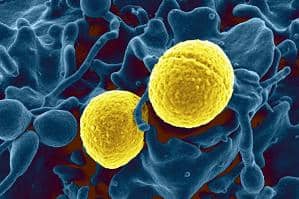November 22, 2013

The Question
Is methicillin-susceptible Staphylococcus aureus (MSSA) Sequence Type 398 confined to Northern Manhattan?
What we found
A previous study by Uhleman et al reported the emergence of methicillin-susceptible Staphylococcus aureus (MSSA) sequence type (ST) 398 as a major community- and hospital-associated pathogen in Northern Manhattan. ST398 isolates display resistance to erythromycin and clindamycin, but are susceptible to tetracycline. The CDDEP analysis considered all outpatient and inpatient MSSA isolates reported between January 1999 and December 2011, examining the national and regional proportions of MSSA with this resistance profile. Our research found that New York has a high proportion of these bacteria, with around 14.5% of MSSA isolates tested displaying this resistance profile in 2011 slightly lower than the 16%recorded in the rest of the Northeast and well above the national average of10.1%.
Why it matters
While the research cannot guarantee that these isolates were all ST398, it is clear that MSSA bacteria with this profile resistant to clindamycin and erithromycin, while susceptible to tetracycline are becoming increasingly prevalent, and particularly so in the Northeast. These findings could help future researchers and medical professionals screen more selectively for resistant bacteria with this profile.
Featured image via sparktography/Flickr

